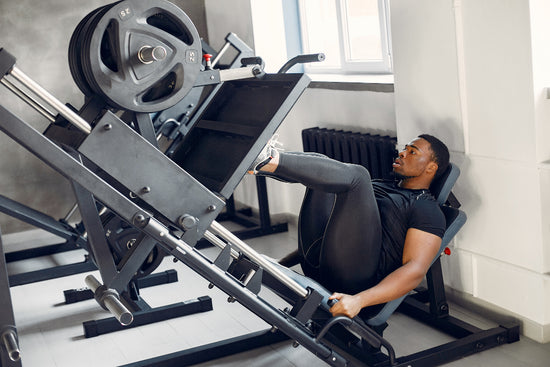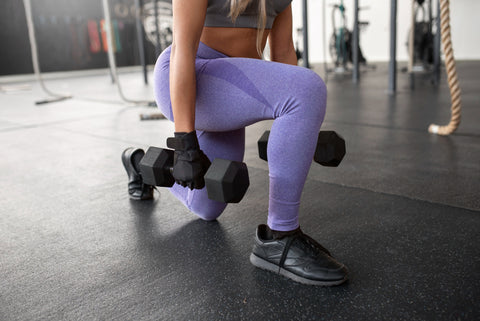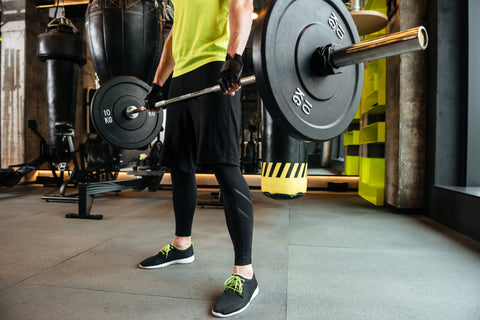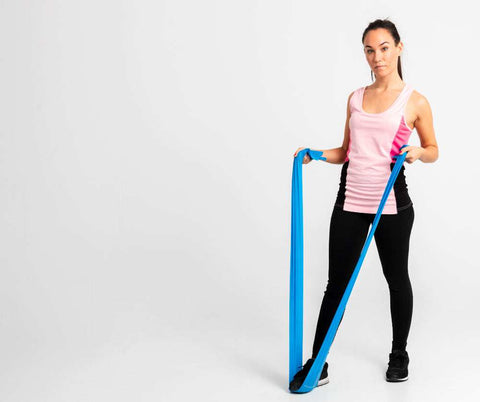15 Top Leg Press Alternatives to Build Muscle


The significance of leg workouts in a balanced fitness regimen cannot be overstated. Muscular lower limbs contribute not only to aesthetics but also to functionality, aiding mobility and balance. Dr. Emily Carter, a sports medicine specialist, emphasises, "Strengthening the leg muscles through a variety of exercises can lead to improved posture, enhanced sport performance, and reduced risk of injury." However, not everyone has access to a leg press machine, often considered a staple in lower body training. This necessity for alternatives might stem from limited gym equipment, personal preference, or the need for a more varied workout routine. Moreover, the benefits of leg exercises extend well beyond mere muscle building; they include improved joint health, better metabolic rates, and increased bone density. The following segments explore bodyweight and dumbbell leg exercises as effective alternatives to the leg press machine, addressing their execution, variations, and inherent benefits.

Squats are a fundamental component of leg workouts, known for their comprehensive engagement of the lower body muscles. Dr. Carter suggests, "Regular squatting can lead to significant improvements in the quadriceps, hamstrings, and gluteal muscles, mirroring the effects of the leg press." Variations such as the air squat, sumo squat, and pistol squat cater to different fitness levels and objectives, ensuring a broad applicability of this exercise.
Lunges are versatile leg exercises that target the quadriceps, hamstrings, and glutes, offering a comparable challenge to the leg press. Forward, backward, and side lunges introduce different strains, thereby preventing muscle adaptation and promoting balanced muscle growth. According to fitness expert Michael Thompson, "Incorporating various lunges into your routine can improve your balance, coordination, and unilateral muscular strength."
Step-ups effectively target the quadriceps, glutes, and calves, with the added benefit of enhancing balance and unilateral leg strength. Variations in height and speed can adjust the intensity, making this exercise suitable for a range of fitness levels. "Using different heights for step-ups can simulate the range of motion and resistance provided by the leg press," explains physiotherapist Laura Kim.
Bulgarian split squats specifically target the quads, hamstrings, and glutes while improving balance and joint stability. This exercise, which involves one leg being elevated behind the body, can be particularly beneficial for individuals with uneven leg strength, as it ensures each leg is worked independently. Dr. Carter states, "The Bulgarian split squat is an excellent exercise for rehabilitation and strength training, akin to single-leg press activities."
Glute bridges focus primarily on the gluteus maximus, providing a viable alternative to the leg press in terms of targeting posterior chain muscles. Variations include single-leg glute bridges and elevated glute bridges, each increasing the exercise's intensity. "Glute bridges can significantly improve posterior chain strength, which is essential for proper posture and injury prevention," notes Laura Kim.

Dumbbell squats allow for a similar range of motion to the leg press while also engaging the core and upper body for stabilisation. This exercise is beneficial for those seeking to strengthen their lower body without the use of large machines. Dr. Carter advises, "Maintaining proper form during dumbbell squats ensures maximum muscle engagement and injury prevention."
Similar to their bodyweight counterparts, dumbbell lunges offer increased resistance, thereby intensifying the workout. They remain a staple in leg strengthening, focusing on balance and coordination. Michael Thompson recommends, "Performing lunges with dumbbells enhances proprioception and muscular endurance, vital for overall leg development."
The goblet squat, a variation involving holding a dumbbell close to the chest, targets the quads, hamstrings, and glutes while improving squat depth and posture. This exercise is particularly effective for those looking to enhance lower body strength without the leg press. "The goblet squat is a functional exercise that simulates everyday movements, making it an excellent alternative for leg press exercises," says Laura Kim.
Dumbbell step-ups extend the benefits of the basic step-up through added resistance, further challenging the leg muscles and mimicking the leg press dynamics. "This exercise is particularly useful for those looking to build muscle endurance and strength, similar to the outcomes expected from leg press routines," explains Dr. Carter.
Dumbbell deadlifts target the hamstrings, glutes, and lower back, acting as a potent alternative to the leg press for strengthening the posterior chain. Proper form is crucial to avoid injury and ensure the effective engagement of the intended muscle groups. Dr. Carter advises, "Keeping the back straight and bending at the hips and knees is essential for performing a safe and effective dumbbell deadlift." This exercise not only builds muscle but also enhances functional movements used in daily activities.
The benefits of incorporating dumbbell deadlifts into a workout regimen are manifold. They improve posture, increase core stability, and boost athletic performance. According to Michael Thompson, "Regularly performing dumbbell deadlifts can lead to significant improvements in overall strength and help counteract the negative effects of prolonged sitting." Additionally, the versatility of the dumbbell deadlift allows for modifications in grip and stance, which can target different muscle groups and address individual weaknesses, making it an excellent substitute for the leg press.

Barbell squats are quintessential for developing leg strength and size. The back squat primarily targets the posterior chain, including the gluteus maximus, hamstrings, and lower back. Dr. Emily Carter suggests, "Back squats are essential for anyone looking to replicate the comprehensive lower body engagement found in leg press exercises." Conversely, the front squat shifts the focus towards the anterior chain, particularly the quadriceps and core, offering a viable alternative for those seeking to enhance balance and posture. Fitness expert Michael Thompson explains, "Front squats can reduce the stress on the lower back and increase core activation, compared to back squats."
Barbell lunges extend the benefits of traditional lunges by adding weight, which can significantly improve strength and endurance. The exercise can be performed in various directions—forward, backward, and sideways—to target different muscle groups and improve multidirectional stability. According to Laura Kim, a physiotherapist, "Barbell lunges incorporate a level of stability and strength not found in machine-based exercises, making them an excellent alternative to the leg press."
The sumo deadlift, characterised by a wide stance, targets the quads, glutes, hamstrings, and adductors, providing a unique variation from the conventional deadlift. Dr. Carter points out, "The sumo deadlift's wide stance mimics the positioning of a leg press, offering a similar range of muscle engagement while also improving flexibility and hip strength." Continue for 7 Effective Alternatives to Deadlifts for Muscle Gains
Romanian deadlifts focus on the hamstrings and lower back, closely replicating the muscle activation patterns seen in leg press exercises. Proper form is crucial to reap the benefits while avoiding injury. "Maintaining a slight bend in the knees and a straight back throughout the movement is essential for targeting the correct muscles," states Michael Thompson. This exercise is particularly beneficial for those seeking to improve their posterior chain strength and hamstring flexibility.
Front squats, similar to back squats, are effective in building overall leg strength but with a greater emphasis on the anterior lower body muscles. "The front squat forces individuals to uphold an erect posture, which translates into better form during everyday activities," Laura Kim remarks. The comparison between front and back squats lies in the muscle groups they target and the spinal stress involved, offering individuals options to suit their fitness goals and physical conditions.

The resistance band leg press is an innovative way to simulate the leg press movement without heavy machinery. By securing a resistance band around the feet and pressing against a fixed point, individuals can effectively target the same muscle groups as the traditional leg press. Dr. Carter advises, "This variation is particularly useful for those working out at home or lacking access to gym equipment."
Cable machine squats provide a unique variation by offering constant tension throughout the exercise, enhancing muscle activation compared to free weights. "The cable machine allows for a range of squat variations that can be tailored to an individual's needs, closely mimicking the versatility of the leg press," says Michael Thompson.
Various gym equipment, such as the hack squat machine, sled machine, and vertical press, offer alternatives to the traditional leg press, targeting similar muscle groups with different mechanics. "Exploring different machines can provide the benefits of leg presses while also introducing new challenges and stimuli," Laura Kim notes.
Smith machine squats allow for a controlled squatting motion, reducing the risk of injury and ensuring proper form. However, they can limit the natural range of motion and reduce engagement of stabilising muscles. Dr. Carter suggests, "Smith machine squats can be a suitable alternative for beginners or those with injuries but should be complemented with free-weight exercises for comprehensive development."
Hack squats, performed on a machine, target the quadriceps, glutes, and hamstrings while reducing lower back strain. "This exercise offers an intermediate option between the leg press and traditional squats, suitable for those seeking to focus on their quadriceps and glutes without the spinal load of free squats," explains Michael Thompson.
The key differences between back squats and front squats primarily lie in their muscle focus, the position of the barbell, and their impact on the body’s posture and mobility:
To perform a resistance band leg press at home, follow these steps:
This exercise simulates the leg press movement and targets similar muscle groups, offering a practical alternative for those without access to gym equipment.
Incorporating dumbbell lunges into a workout routine offers several benefits:
In conclusion, while the leg press is a valuable exercise for lower body development, numerous alternatives offer comparable benefits. Incorporating a mix of bodyweight, dumbbell, barbell, and resistance band exercises can provide a comprehensive leg workout catering to various needs and situations. It is essential to consider individual fitness levels, goals, and potential limitations when selecting suitable exercises. By understanding the function and proper execution of each alternative, individuals can effectively target the same muscle groups as the leg press, often with added benefits such as improved balance, flexibility, and functional strength. Dr. Emily Carter concludes, "The key to a successful leg training program is diversity and progression. Alternating between different exercises and gradually increasing intensity can lead to optimal muscle growth and development."
Moreover, incorporating machine alternatives like cable squats, Smith machine squats, and hack squats can provide the structured movement patterns similar to those of the leg press while also offering the flexibility to adjust for comfort and effectiveness. Michael Thompson advises, "Utilising a variety of equipment can not only stave off boredom but also challenge your muscles in new ways, leading to continuous improvement."
In essence, while the leg press machine is a standard tool in lower body development, it is not the sole path to achieving strong, muscular legs. By exploring and integrating the alternatives discussed, individuals can enjoy a dynamic, adaptable, and effective lower body workout regime. Ultimately, consistency, proper form, and a well-rounded approach to leg training will contribute significantly to achieving desired fitness outcomes.
Plus get the inside scoop on our latest content and updates in our monthly newsletter.